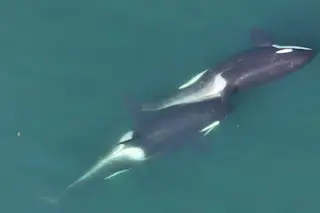An extinct mountain goat that was once common in the Pyrenees briefly became the first animal to be brought back from extinction, as researchers used frozen DNA to produce a clone. But the newborn kid died within minutes of birth due to breathing difficulties, signaling that the Jurassic Park dream of resurrecting extinct species is still some way off. The Pyrenean ibex, or bucardo, is a subspecies of the Spanish ibex that is believed to have died out completely in 2000. Before the death of the last known individual (a 13-year-old female known as Celia), biologists captured her and took cells from her skin and ears, which were frozen in liquid nitrogen. An earlier cloning attempt using the skin cells failed during gestation. But the
latest attempt involved the creation of 439 ibex-goat hybrid cloned embryos made by inserting the cell nuclei of the ibex's skin cells into the egg ...













